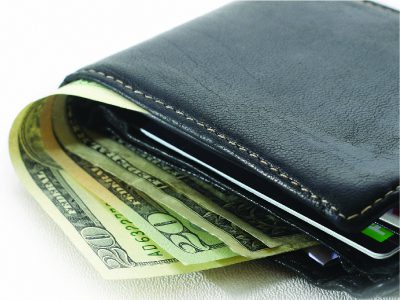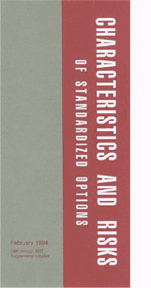
Budgeting is like counting calories. It’s good for you but no one enjoys doing it. As a result, very few people do either!
What if I told you there were a lot of different ways to budget and it just takes time to figure out what works for you? It’s not always about saving every last receipt and putting it into a spreadsheet – there are simpler ways that get you all the benefits without the things you hate.
Today, I’ll share three ways that all achieve the primary objective of budgeting (to save money) and one just might become the budgeting style for you.
Pay Yourself First
When you Pay Yourself First, you save first and spend second. You get all of the benefits of budgeting (saving!) without the hassle of receipts.
When you get paid, immediately transfer money into savings and leave the rest in your checking account to spend on your needs. If you have access to a 401(k) or other retirement account, you can have your contribution deducted directly from your paycheck.
The point of budgeting is to help you save money, right? If you save first, you get all of the benefits without any of the hassle of recording every transaction. Also, by saving first, you make saving a priority over spending.
If you aren’t sure how much you should save, I like the money ratio of 20-30-50: 20% to savings or paying down debt, 30% to housing, and 50% on everything else. Your situation may differ but those are general rules of thumb I try to stick to.
Use Online Tools to Do The Work
If Pay Yourself First seems too hands off to you, try using tools that track your expenses and do the work for you. Tools like Personal Capital will link with your credit card accounts and import all transactions. They will also categorize them, into areas like Restaurants and Groceries, which helps you build a budget.
By automating part of the process, you can skip the work of tracking every last purchase as long as you do it with a linked card. I personally enjoy doing this because of how much data it collects. You’d be surprised by how much you spend in various categories and that knowledge can be powerful in changing your behavior too.
Try Envelope Budgeting
Finally, if you don’t like to Pay Yourself First and the thought of linking up accounts to an online system is unappealing, you could always try a tried and true method known as envelope budgeting. The idea is very simple – get a bunch of envelopes and write category names on them: groceries, dining out, gas, etc. One of those envelopes should be labeled as savings.
At the start of every month or pay period, you take out cash and put the money into those envelopes. As you need money, you spend from the envelopes. You deposit the money in the savings envelope into your savings account. At the end of the month, any extra cash goes into savings.
As the months pass, you can adjust the amounts in each envelope but by sticking to a cash-based spending method it’s much harder to fall into the trap of debt. Since everything is cash and cash comes from the envelopes, this can help those in credit card debt conquer their balances.
In the end, remember that the goal of budgeting is to save money for your bigger goals – buying a house, buying a car, putting your kids in school, etc. It doesn’t matter how you get there so give all of these a try to see which one suits you best.

 Jim Wang is the founder of Wallet Hacks. Jim is a
thirty-something father of two who has been featured in the New York Times,
Baltimore Sun, Entrepreneur, and Marketplace Money. He can show you the
philosophies, strategies, and methods he used to become financially
independent and free to pursue what was important.
Jim Wang is the founder of Wallet Hacks. Jim is a
thirty-something father of two who has been featured in the New York Times,
Baltimore Sun, Entrepreneur, and Marketplace Money. He can show you the
philosophies, strategies, and methods he used to become financially
independent and free to pursue what was important.

Comment on this article
Comments
Donna N. on December 9, 2016 at 2:59pm
Very useful never thought of paying myself first.
Credence Global Bank on December 12, 2016 at 10:56am
Hi Donna, we're glad you found Jim's tips to be useful! Thanks for reading the blog!
Matilda H. on April 19, 2017 at 10:41am
I like the ideas & I plan to implement the envelope method. Thank you!!!
Credence Global Bank on April 20, 2017 at 1:03pm
Hi Matilda, that's great - we're glad to hear you found Jim's tips to be helpful. Thanks for reading the blog!
URIEL on September 6, 2017 at 5:12pm
THIS IS GOOD PAY YOURSELF 1ST THEN SPEND 2ND I WAS ALWAYS , I WAS ALWASY SPENDINF 1ST THEN SAVING WILL SOMETIME NOT SAVE NOTHING FOR SPENDING
Yaneth C. on February 7, 2018 at 9:05am
I like the ideas & I plan to implement the envelope method. Thank you!!!
Credence Global Bank on February 21, 2018 at 12:23pm
That's great to hear, Yaneth! We hope these methods can help you save.
Michael on January 8, 2019 at 11:50am
I started doing this years ago. Amazing how much more efficient this system is. I keep just enough in my checking to pay bills and automatically have the rest moved into a retirement account through ach withdrawls. Now I just review my expenses every few months or so and adjust my savings payments accordingly. It's dead simple, especially if you have an online bank where everything is so easily tracked.
Credence Global Bank on January 8, 2019 at 5:02pm
That's great to hear, Michael. We love hearing that you found a system that helps you stack on track!